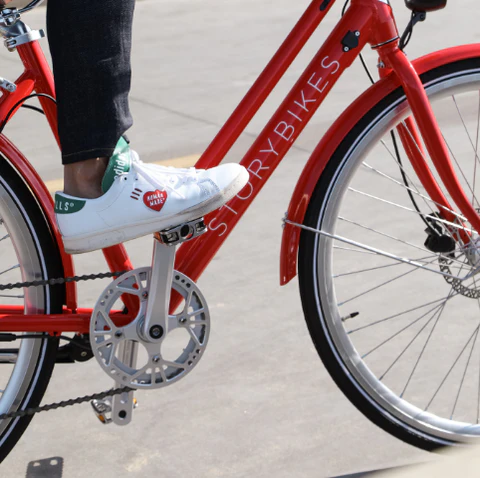What’s The Difference Between Torque And Cadence Sensing?
One of the standout features of electric bikes is their pedal-assist systems (PAS). These systems engage the motor when you pedal, helping you travel faster, farther, and with less effort compared to a regular bicycle. While all e-bikes come equipped with some type of PAS, the specific type varies from model to model. Understanding these differences can help you choose the right bike for your needs. There are two primary types of pedal assist systems: torque sensing and cadence sensing. Both systems signal the motor to activate pedal assist based on the rider's actions, but they do so in different ways. These variations can significantly impact your riding experience, including the smoothness of your ride and the longevity of your battery life. For newcomers to the world of e-bikes, all this terminology can be overwhelming. If you're thinking about purchasing an e-bike, it's essential to weigh the pros and cons carefully. However, the technical jargon can make decision-making challenging. Fortunately, we're here to break it down for you. Torque sensing PAS is considered more advanced because it responds directly to the force you apply to the pedals. These systems measure the pressure you exert using precise strain gauges, ensuring the bike provides just the right amount of assistance based on your efforts. For instance, when climbing a hill, the bike will automatically increase pedal assist to match your increased effort. On flat terrain, assistance levels decrease accordingly. This responsiveness results in a smoother, more intuitive ride. Although e-bikes with torque sensing systems tend to be pricier, they offer several advantages. They consume less battery power since they only provide assistance when needed. This means you'll enjoy extended range and longer battery life, particularly beneficial if you frequently tackle hilly routes. Additionally, torque-sensing bikes deliver a seamless cycling experience that feels natural and responsive. Cadence sensing PAS relies on a simpler mechanism, typically involving a magnet attached to the crank. When you begin pedaling, the magnet triggers the pedal assist. Adjusting the assist level is straightforward, allowing you to customize your riding experience. Unlike torque sensors, cadence sensors don't measure pedal pressure; instead, they activate pedal assist once you start pedaling. While cadence sensing systems are generally easier to install and often result in lower-priced bikes, they lack the sophistication of torque sensing systems. On flat surfaces, cadence sensing performs adequately, but its effectiveness diminishes on hilly terrain. The abrupt transitions between assisted and unassisted pedaling can feel less refined, which might be noticeable during intense rides or when navigating challenging paths. In general, torque sensing offers superior performance due to its ability to sync pedal assist with your movements. Cadence sensing, on the other hand, operates more like a binary switch—on or off. This can lead to a less fluid riding experience, especially on uneven terrain where continuous adjustments are necessary. Moreover, cadence sensing tends to drain the battery faster since it doesn't account for varying conditions as effectively as torque sensing does. When considering long-term value, torque sensing is the clear winner. Its adaptability ensures your bike remains suitable for evolving fitness goals and diverse terrains. Conversely, cadence sensing is better suited for casual riders who prioritize affordability and simplicity over advanced features. Ultimately, torque sensing represents a significant leap forward in e-bike technology. Not only does it enhance comfort and efficiency, but it also maximizes battery longevity. While torque-sensing e-bikes command higher prices, their versatility makes them a worthwhile investment for serious cyclists. Riders focused on short, flat commutes may find cadence sensing sufficient, yet upgrading to a torque-sensing system opens doors to greater possibilities. Ready to hit the trails? Explore our range of affordable, high-quality e-bikes designed for both urban and outdoor adventures. Whether you prefer step-through designs, road bikes, or commuter models, our products blend timeless aesthetics with cutting-edge innovation. Plus, every purchase supports a global initiative by donating a bike to a student in Zimbabwe. Interested in joining the e-bike revolution? Browse our collection today and don’t hesitate to reach out with any queries. Together, let’s pedal toward a greener future! Auto Body Parts Roll Forming Machine Huai'an Senyu Intelligent Technology Co., LTD , https://www.jshasyzn.com
Torque Sensing: An In-Depth Look
Cadence Sensing: A Simpler Alternative
Torque vs. Cadence Sensing: Which Is Right for You?
The Final Verdict